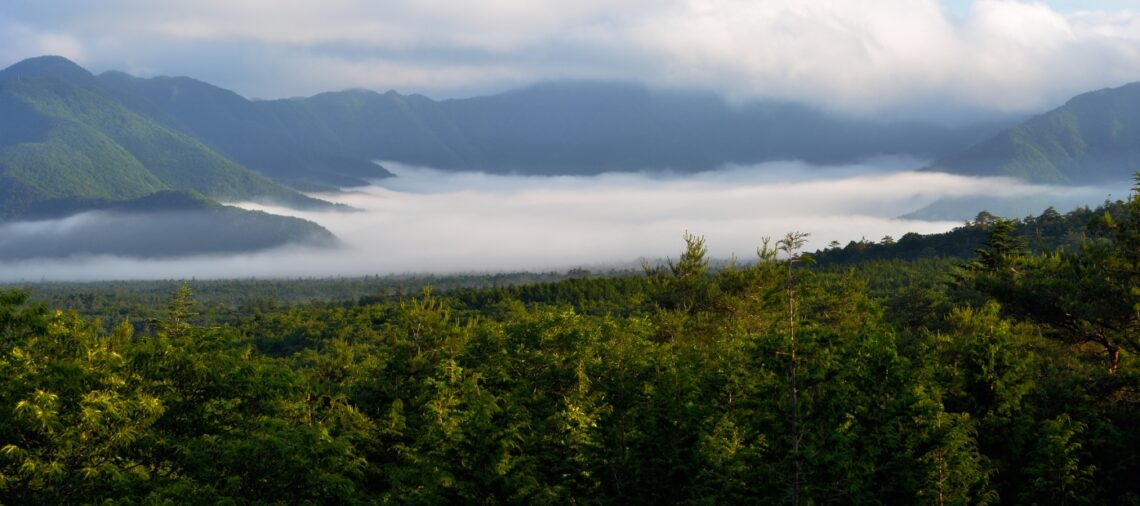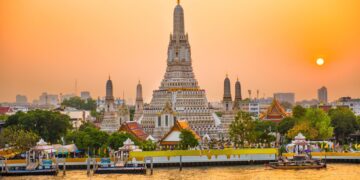Aokigahara Forest, also known as the Sea of Trees or Suicide Forest, is situated at the northwest base of Mount Fuji in Japan. It spans approximately 35 square kilometers and is considered one of Earth’s most eerie and mysterious places. The forest is known for its dense vegetation, consisting primarily of tall evergreen trees that create an atmosphere of darkness and seclusion. Aokigahara is also notorious for its reputation as a suicide hotspot, with a significant number of individuals taking their lives within its boundaries each year. This haunting reputation and its natural beauty and isolation have made Aokigahara a subject of fascination and curiosity for many visitors and researchers alike.
The Haunting History of Aokigahara
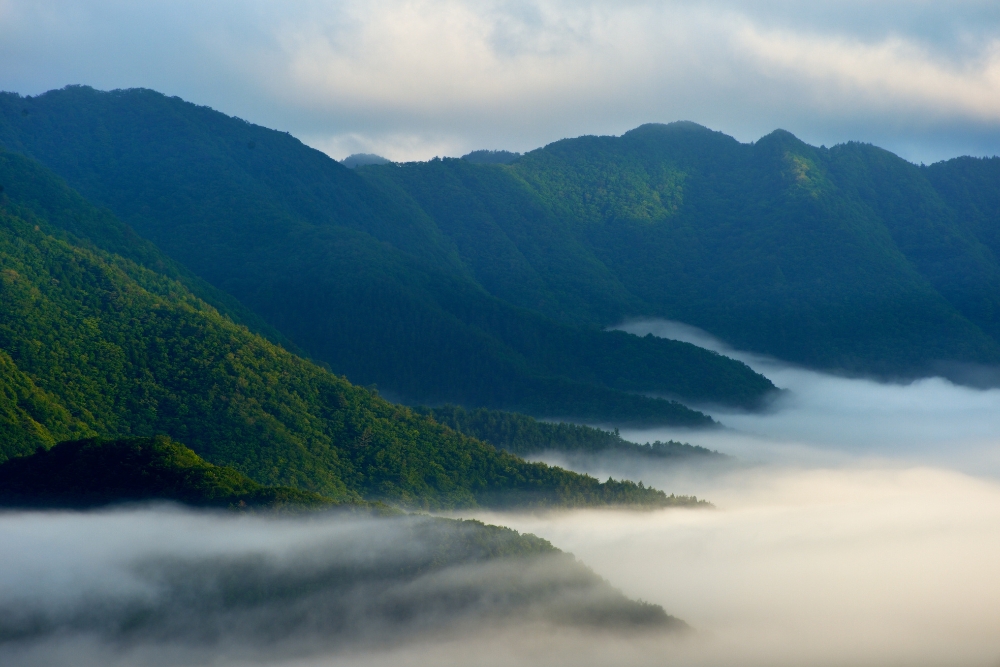
This enchanting yet haunting forest holds a detailed history deeply rooted in Japanese culture and history. Aokigahara has long been associated with mythology and folklore and is often considered a place of spiritual significance. In Japanese mythology, it is said to be the home of yūrei, restless spirits of the deceased who could not find peace. The forest’s eerie reputation has attracted many curious visitors. Still, it is also known as a place where people come to end their lives, making it a topic of great sensitivity.
Historically, Aokigahara Forest has been regarded as a place of great fear and superstition. During the 19th century, it was believed that ubasute, a practice of abandoning elderly or infirm family members in remote areas, occurred in this forest. While historical evidence for this is scarce, the legend persisted, adding to the forest’s dark reputation.
In the 1960s, Aokigahara gained further attention when Seicho Matsumoto’s novel “Tower of Waves” depicted a desperate lover’s suicide within the forest, further cementing it as a place associated with tragedy and despair. In recent years, Aokigahara has become a controversial topic, with increased efforts from the Japanese government and various organizations to discourage suicides and promote mental health awareness within the forest. Despite its dark history, Aokigahara continues to capture the imagination of many while also serving as a reminder of the importance of mental health support in society.
Why Aokigahara it’s known as the “Suicide Forest” and the statistics related to suicides in the forest
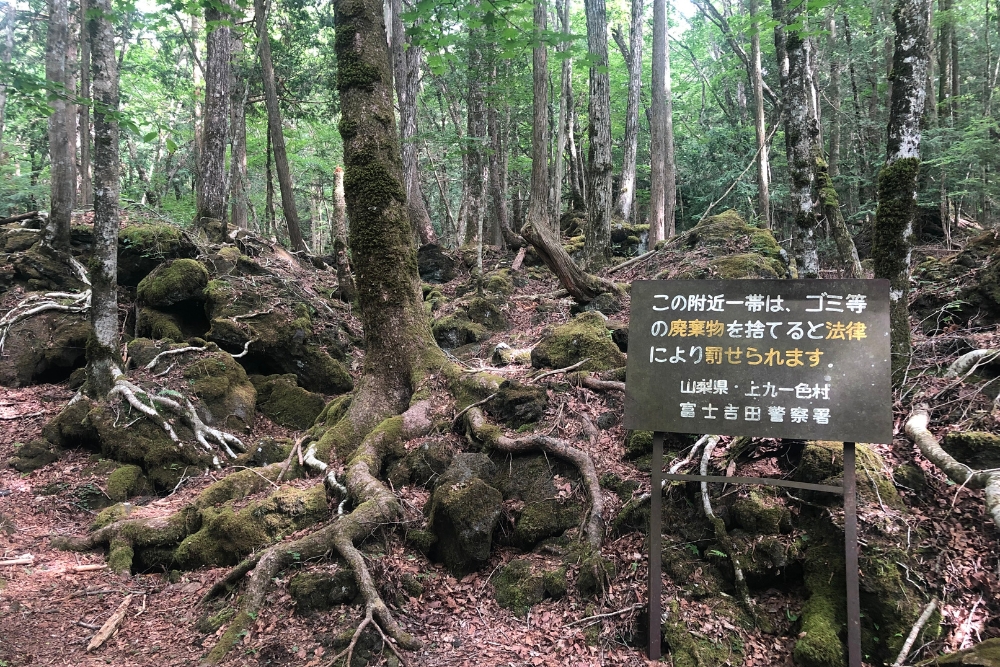
The statistics related to suicides in the Aokigahara Forest are deeply troubling. According to official records, the forest consistently has one of the highest suicide rates in the world. In recent years, the annual number of suicides in the forest has ranged from 50 to over 100 cases. These numbers do not account for unreported or undiscovered cases, making it difficult to determine the true extent of the issue.
Japanese authorities have taken various measures to prevent suicides, including placing signs throughout the forest encouraging people to seek help and providing support hotlines. Nonetheless, the forest’s tragic association with suicide continues to cast a shadow on its natural beauty and raises important discussions about mental health and support systems.
One famous example of suicide in Aokigahara Forest
One famous example of suicide in Aokigahara Forest is the case of a Japanese author named Wataru Tsurumi. In 1991, Tsurumi published a book titled “The Complete Suicide Manual,” which contained detailed instructions on various methods of taking one’s own life. Tragically, it is believed that Tsurumi himself committed suicide in Aokigahara Forest, where his body was discovered in 1992.
This incident brought international attention to the forest’s dark reputation and highlighted the concerning issue of suicide in Japan. Tsurumi’s case serves as a haunting reminder of the deep despair that can lead individuals to choose this infamous location to end their lives.
Ecological and Geological Aspects of Aokigahara
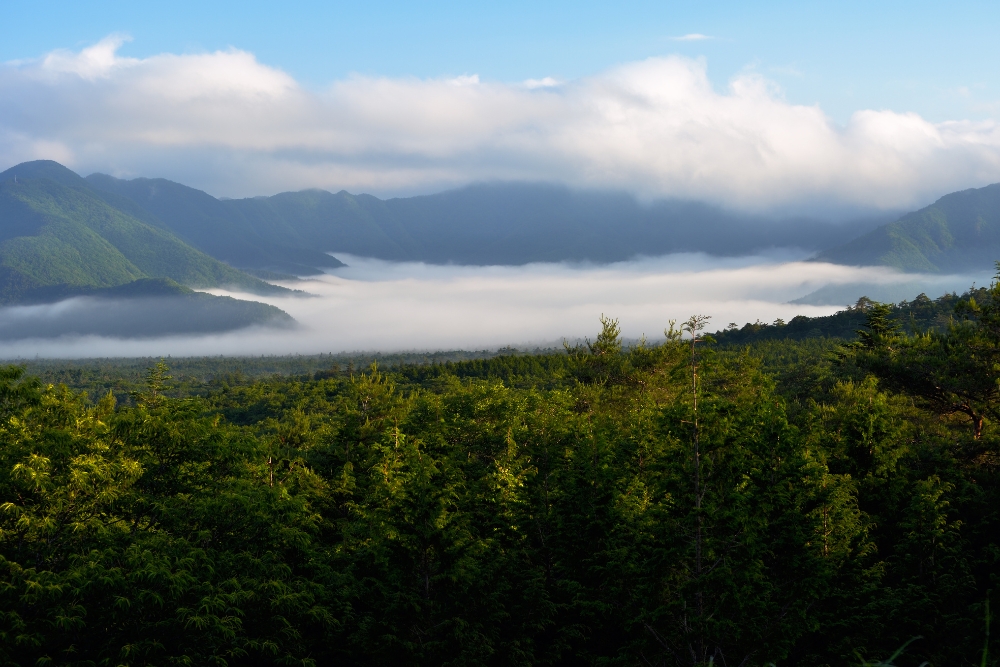
Aokigahara forest boasts a unique ecology and geology that sets it apart. The forest’s geology is primarily composed of volcanic rock and ash resulting from past eruptions of Mount Fuji. This volcanic soil is rich in nutrients and minerals, providing a fertile ground for the growth of diverse flora. The forest is known for its dense and lush vegetation, with various plant species thriving in its unique microclimate. Mosses, ferns, and lichens cover the forest floor, creating a carpet-like appearance, while towering trees such as Japanese cedars and fir trees dominate the canopy.
The flora in Aokigahara forest supports diverse fauna, including several unique and rare species. The forest is home to various bird species, such as the great spotted woodpecker and the Japanese bush warbler, which find shelter and nesting sites among the dense foliage. Small mammals like the Japanese serow, a goat-like creature, and the masked palm civet, a nocturnal omnivore, also inhabit the forest.
The dense vegetation and abundance of insects provide a suitable habitat for a wide range of insectivorous animals, including bats and various species of snakes. However, the forest’s most notable wildlife feature is its diverse insect population, with numerous species of butterflies, beetles, and moths, some of which are endemic. Overall, Aokigahara forest’s unique ecology and geology create a vibrant and thriving ecosystem, showcasing the resilience of life in the face of volcanic activity.
The role of Mount Fuji’s volcanic soil in shaping the Aokigahara Forest’s landscape
Mount Fuji’s volcanic soil has played a crucial role in shaping the unique landscape of the Aokigahara forest. Situated at the base of the majestic volcano, Aokigahara is enriched with nutrients and minerals deposited over centuries of volcanic activity. This fertile soil has provided the perfect conditions for growing a diverse flora, including towering trees and dense vegetation.
Additionally, the volcanic soil has excellent water retention properties, ensuring a constant moisture supply for the forest. As a result, the Aokigahara forest is characterized by its lush greenery and vibrant ecosystem, attracting a wide variety of plant and animal species. The volcanic soil of Mount Fuji has undoubtedly played a significant role in shaping and sustaining the unique landscape of Aokigahara.
Cultural Impact and Societal Response
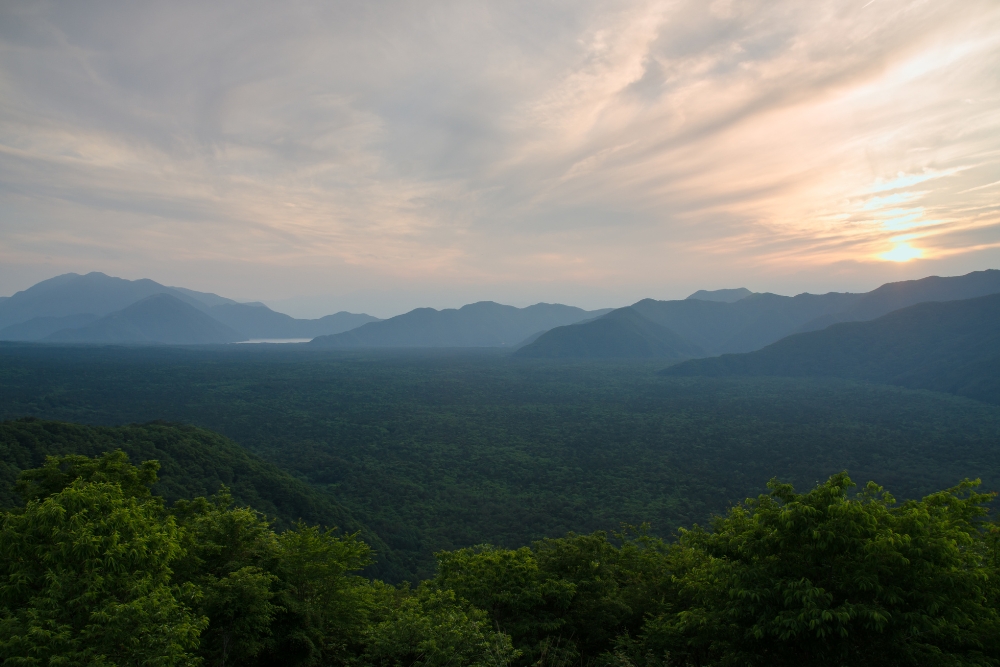
How Aokigahara has been depicted in media, literature, and popular culture.
Aokigahara Forest has captured the fascination of many creators in media, literature, and popular culture. The dense forest has been depicted in various forms, often exploring its dark and mysterious reputation. In movies such as “The Forest” (2016) and “The Sea of Trees” (2015), Aokigahara serves as a haunting backdrop, emphasizing its association with suicide and supernatural elements. This eerie forest has also inspired literature, with authors like Jeremy Bates delving into its legends and folklore in books like “Suicide Forest” (2014), adding to the mystique surrounding Aokigahara.
Aokigahara has also made its mark in popular culture, particularly in music. Artists like Ed Sheeran and Thirty Seconds to Mars have referenced the forest in their songs, using its somber reputation to evoke sadness and introspection. The forest has also become the subject of documentaries and YouTube videos, where explorers venture into its depths to document their experiences. While these portrayals often focus on the eerie and macabre aspects of Aokigahara, they have also sparked important conversations about mental health and suicide prevention, shedding light on the significance of this unique and haunting location.
Efforts by the Japanese government and local organizations to prevent suicides and preserve the forest’s natural beauty
The Japanese government and local organizations have been actively working towards preventing suicides and preserving the natural beauty of their forests. Recognizing the urgent need to address the high suicide rates in certain areas, the government has implemented various measures. These include increasing patrols and security measures, as well as installing surveillance cameras to deter potential suicide attempts.
They have also focused on raising awareness about mental health issues and providing counseling services to those in need. Local organizations have played a crucial role in this endeavor, organizing volunteer programs to clean and maintain the forest, ensuring its natural beauty remains intact. By combining efforts, these initiatives aim to save lives and protect and preserve the valuable natural resources that Japan’s forests offer.
Visiting Aokigahara – Information for tourists: guidelines for visiting and exploring the forest responsibly
Visiting Aokigahara requires a great deal of sensitivity and responsibility. It is important to remember that Aokigahara is not just a morbid tourist attraction but also a natural wonder with a rich history and cultural significance. To visit this forest responsibly, it is important to be well-informed and respectful of the environment and the people affected by the tragedies associated with it.
When planning a visit to Aokigahara, educating yourself about the forest’s history and significance is essential. This will help you approach the visit with the necessary sensitivity and understanding. It is also important to be aware that Aokigahara is not an amusement park but a place of mourning for families who have lost their loved ones. Therefore, visitors must maintain an atmosphere of respect and empathy while exploring the forest. It is advisable to avoid taking photographs or engaging in any activities that could be seen as disrespectful or invasive. Additionally, it is essential to follow marked paths and designated areas to minimize the impact on the natural environment and preserve the tranquility of the forest.
As a dense forest with numerous trails and caves, it is advisable to hire a local guide to navigate the area safely. It is important to note that Aokigahara has a dark reputation as a site where individuals have taken their own lives, so visitors must be mindful of the solemnity and the potential psychological impact of the location. It is strongly recommended to come prepared with appropriate outdoor gear, including sturdy footwear, warm clothing, and water and snacks. Furthermore, it is essential to follow local authorities’ safety guidelines to ensure a safe and responsible visit to Aokigahara.
Conclusion
Aokigahara, also known as the Sea of Trees, is a place that encapsulates a complex and enigmatic nature. Towering trees, lush vegetation, and an ethereal silence create an enchanting and peaceful atmosphere. However, beneath this tranquil facade lies a somber history that adds complexity. Aokigahara has gained notoriety as a site notorious for suicides, with a haunting reputation that looms over its landscape. The dichotomy between its natural allure and the tragic events that have unfolded within its depths creates a sense of intrigue and contemplation, making Aokigahara a place where beauty and darkness intertwine in a hauntingly intricate manner. Who dares to visit Aokigahara Forest?

